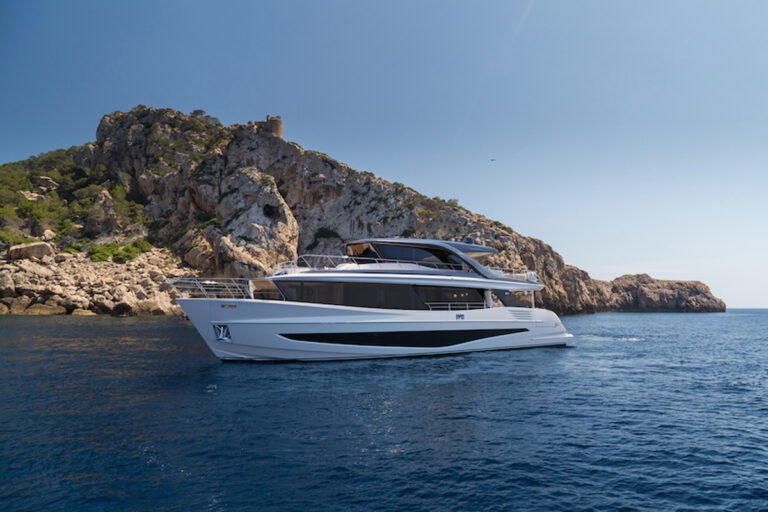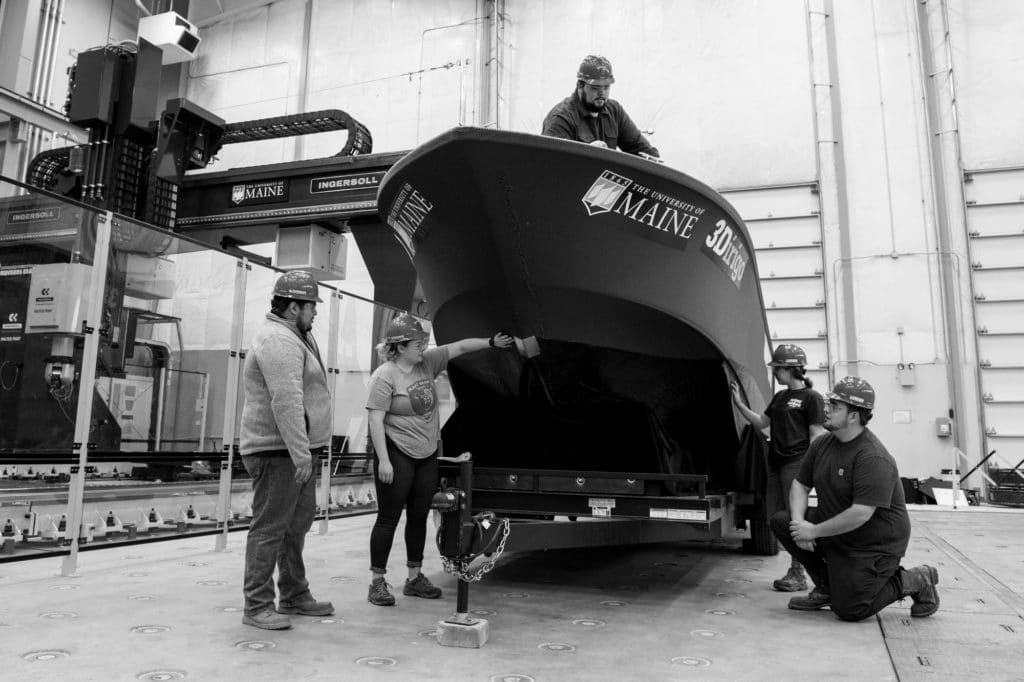
The desire to build boats and explore distant horizons is one of humanity’s oldest pursuits, and the drive to innovate increasingly better craft and technologies has an equally time-honored heritage. Each year, Yachting celebrates trailblazers who have made significant impacts on the boating world. Please join us in raising a glass to the class of 2021.
Habib Dagher
When boatbuilders craft glass-reinforced plastic yachts, the work typically requires a significant investment of time to build the molds and lay down the fiberglass matting, core materials and resins. Habib Dagher of the University of Maine’s Advanced Structures and Composites Center took a decidedly different approach to boatbuilding: He turned on a bespoke 3D printer.
Dagher and his team spent several years searching for a company that could build a 3D printer to their specs, plus the 15 preceding years developing the biofibers (derived from corn and wood) that the printer used to create 3Dirigo, their 25-foot center-console, in just 72 hours in late 2019.
This work earned the team two Guinness World Records. The first was for creating the world’s biggest 3D-printed boat, and the second was for creating the world’s biggest 3D-printed object.
The accomplishments opened several important boatbuilding doors. For starters, the head-spinning time frame to print 3Dirigo means designers and builders could eventually fast-track prototypes to satisfy market trends. Secondly, the biofibers, which are roughly 1,000 times smaller than sawdust, represent a new way to craft strong, environmentally responsible yachts. Plastic objects with biofiber reinforcement exhibit properties much like aluminum but can potentially be recycled. Finally, Dagher’s team can print recyclable molds that boatbuilders can use to craft production and custom-built yachts.
While 3Dirigo is just 25 feet length overall, the Advanced Structures and Composites Center’s 3D printer can print monocoque objects that measure up to 100 feet by 22 feet. Better still, these objects can be joined to create much larger, multi-element objects. Say, a 200-foot superyacht.
Germán Frers
Yacht design has long been a family affair in the Frers household. Germán Frers Sr. founded Frers Naval Architecture and Engineering in 1925 in Buenos Aires, Argentina. By 1970, when his son, Germán Frers, took over, the company had designed almost 600 yachts.
Prior to 1970, the younger Frers, who was born in 1941, spent time working for the renowned Sparkman & Stephens design firm. Upon returning to Argentina, Frers began expanding on his father’s accomplishments. Frers-designed yachts have won almost all major international regattas, including the Admiral’s Cup, the Newport Bermuda Race, the Whitbread Round the World Race and the Louis Vuitton Cup.
In 1979, Frers joined forces with Nautor’s Swan to create the Swan 51. Some 700 Swans have since been built to Frers’ designs, ranging from the Swan 36 to the Swan 120. While their waterlines differ, these yachts share a design DNA that offers owners offshore cruising comfort, graceful style and racecourse performance.
Additionally, Frers has designed production sailboats for high-end builders including Hallberg-Rassy and Hylas, as well as custom designs that stretch into the super-maxi category. Hyperion, a 156-footer that Royal Huisman built in 1998 to a Frers design, was at the time the largest sloop ever launched.
While famous for his elegant sailboats with spacious, teak-adorned decks, Frers also has created some of the world’s most stunning mega-yachts, including the 279-foot Pacific, which Lürssen built in 2010. He also designed production motoryachts for Sirena Yachts.
Frers continues to work as CEO and principal designer of Frers Naval Architecture and Engineering, which has designed more than 1,300 yachts since 1925. His son, Germán “Mani” Frers, continues the family legacy from his studio in Milan, Italy.
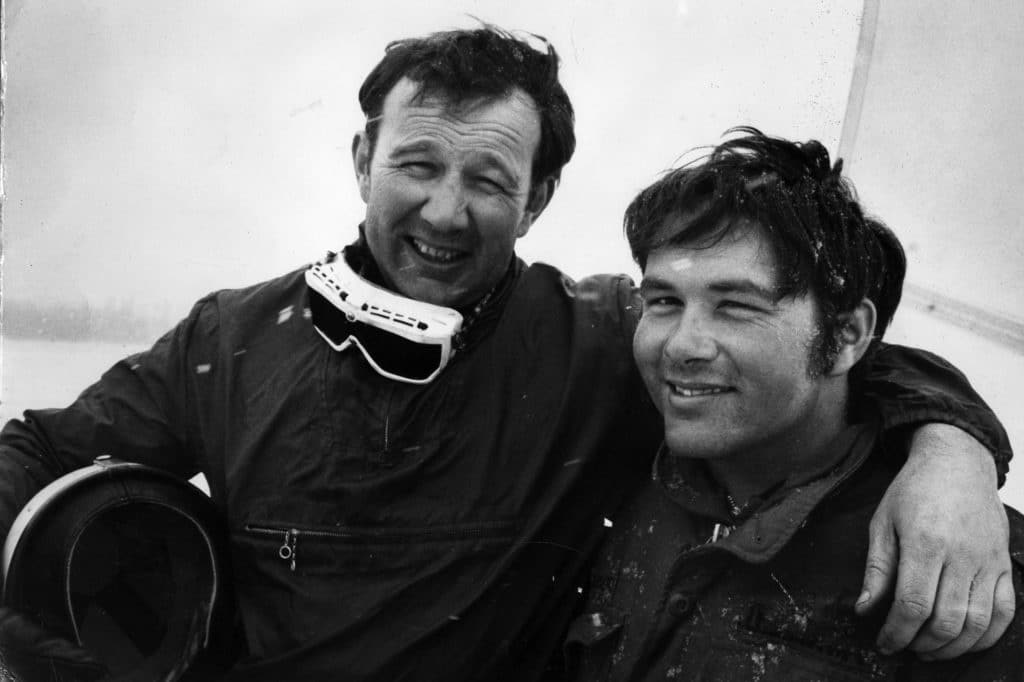
Meade and Jan Gougeon
Brothers Meade and Jan Gougeon faced a tough decision in 1974. While their iceboat-building business had become the biggest in the country, their real interest was in creating epoxy systems for building light, strong and fast wood-composite boats, sans fasteners. As such, they made the tough call to shutter the iceboat business and focus on their groundbreaking epoxy business.
An early break came thanks to geography: The brothers opened a shop near the Dow Chemical Company, and they turned Herbert Dow, grandson of the company’s founder, on to iceboating. Herb gave the Gougeons access to the chemical company’s engineers, who helped the brothers develop revolutionary boatbuilding resins and hardeners.
Thanks to a well-timed capital investment from their middle brother, Joel, the brothers began packaging and selling their West System epoxy in 1971. As word of their company’s products spread, the brothers continued to build one-off and production sailboats—and sail and race (and win) extensively—while publishing newsletters, technical manuals and the biannual Epoxyworks magazine. In their spare time, they accepted projects such as building laminated wood samples for NASA and 65-foot-long composite wind-turbine blades for Westinghouse.
In the 1980s, the company introduced small, self-contained repair kits—dubbed Handy and Maxi packs—and supporting literature that helped DIYers and professionals repair fiberglass boats. In 1993, the brothers ceased commercial boatbuilding to focus entirely on their epoxy business. Other products followed, including adhesives, laminating epoxies and fairing fillers, but the brothers never lost their love for iceboating.
In 2015, three years after Jan’s death, they were inducted into the National Sailing Hall of Fame. Today, with Meade also having died, West System products live on. They are used worldwide on vessels ranging from dinghies to superyachts.
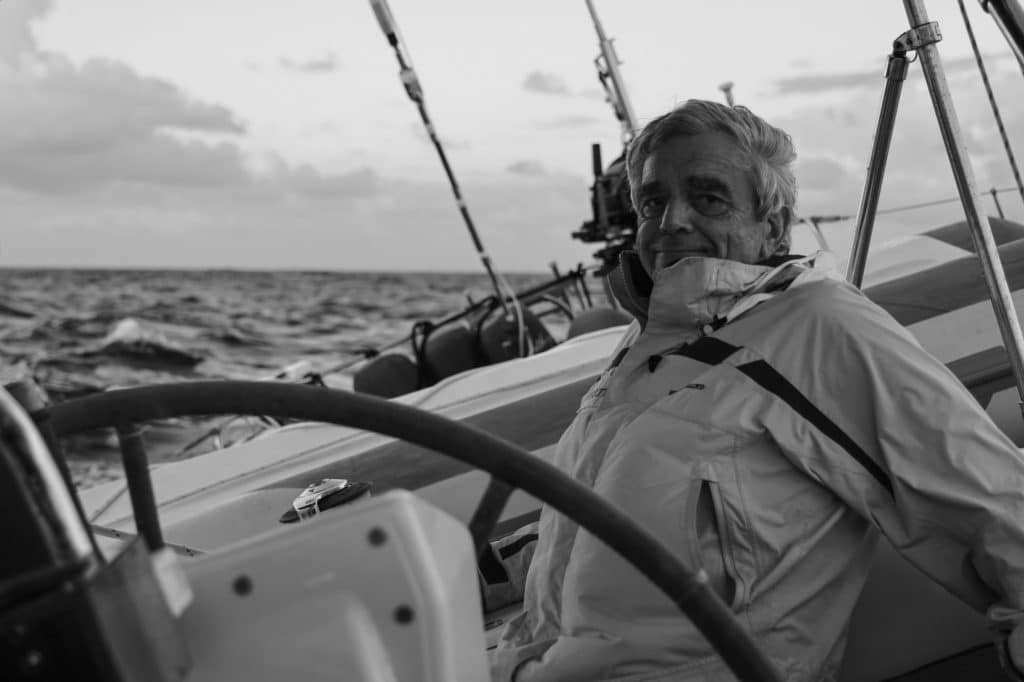
Rod Johnstone
When Rod Johnstone designed Ragtime in 1974, two key measurements were already locked: the boat’s beam, at 8 feet, 11 inches, and its length overall, at 24 feet. This was because he planned to build it in one of the bays of his three-car garage in Stonington, Connecticut, where the space measured 28-by-9 feet. When he pulled the boat out in May 1976, its rails rubbed the garage’s sides. A hull-raising party followed with friends, relatives and neighbors helping him to lift Ragtime onto its keel in the driveway. The boat immediately proved Johnstone’s yacht-design acumen.
Ragtime competed in 21 races in summer 1976, winning 19 and settling for second- and fourth-place finishes in the others. People started noticing. Johnstone reached out to his brother, Bob, a competitive sailor and marketing whiz who had recently entered the marine industry. After hearing his kid brother decline to sell Ragtime at the end of that summer, Bob pushed Rod to consider selling copies.
Enter Everett Pearson of the Tillotson Pearson boatbuilding factory. Pearson agreed to start producing J/24s. By 1977, Bob had left his day job and joined Rod to form J/Boats. More than 5,500 J/24s have since been built, and they are sailed and raced in almost 40 countries, making the J/24 the world’s most popular One Design keelboat.
Other designs followed, ranging from the J/22 to the J/65, as well as innovations such as the retractable sprit pole, which arrived in 1991 aboard the 34-foot J/105. While now common, sprit poles simplified spinnaker-handling for racing crews and daysailors.
Today, virtually all great sailors have raced aboard J/24s and other Rod Johnstone designs, and J/Boats continues to create popular One Designs.
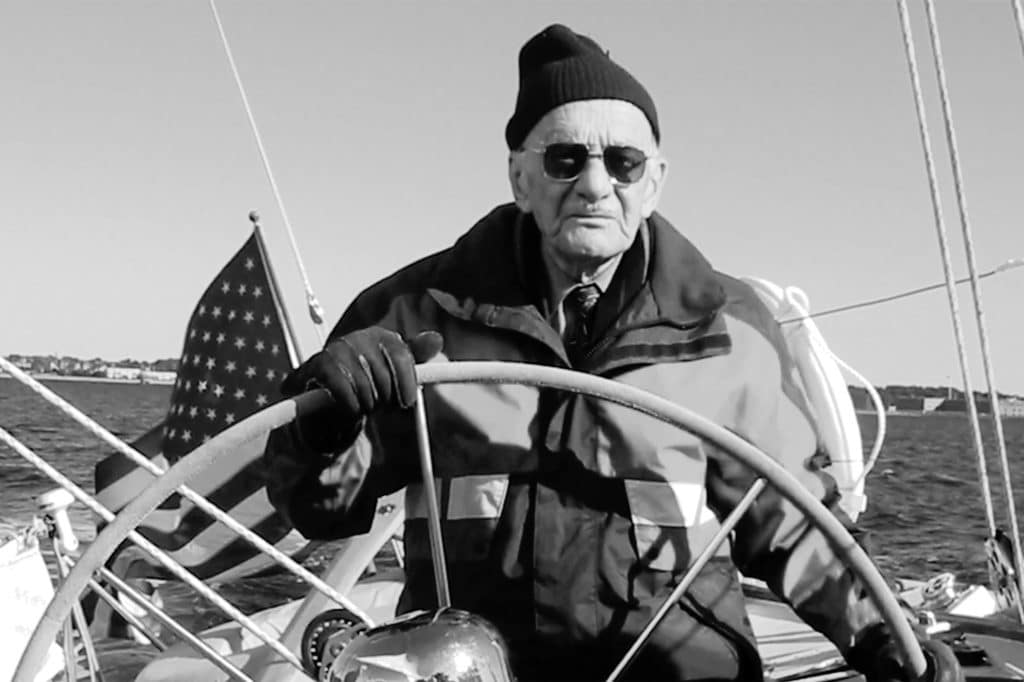
Arent Kits van Heyningen
The cliché goes that father knows best, but sometimes it’s a son’s confidence in his dad that influences an industry. Such was the case with Martin Kits van Heyningen and his father, Arent Kits van Heyningen.
During the run-up to the 1980 America’s Cup, the French syndicate needed a tactical sailing computer. By chance, the team’s skipper met Martin, a Yale University undergrad who was working a summer job at a Newport, Rhode Island, boatyard. After learning that Martin’s father built computers, the skipper asked if Arent could help the team. Martin assured the skipper that his father could make anything.
Arent delivered the world’s first sailing computer, which he built in his basement. The problem, however, was that the French team’s analog fluxgate compasses weren’t compatible with it. So, Arent returned to his basement and built the world’s first self-calibrating digital fluxgate compass.
In 1982, Arent began building digital compasses with his sons, Martin and Robert, under the Sailcomp name. The family-owned business became KVH in 1985 and, in 1997, acquired the assets of a Chicago-based company that developed fiber-optic technologies. This acquisition let KVH become a player in the markets for inertial navigation and fiber optic gyroscopes.
In 1994, KVH introduced its first satellite-TV service for mariners. In 1998, the now publicly owned company began reselling satellite-communications airtime and equipment. In 2007, KVH introduced the TracPhone V7 stabilized satcom antenna, which operates on KVH’s mini-VSAT Broadband network.
Other ideas and products followed, and as the years unfurled, Arent, Martin and Robert remained active sailors. In 2010, at 94, Arent became the oldest sailor to complete the epic 635-nautical-mile Newport Bermuda Race.








